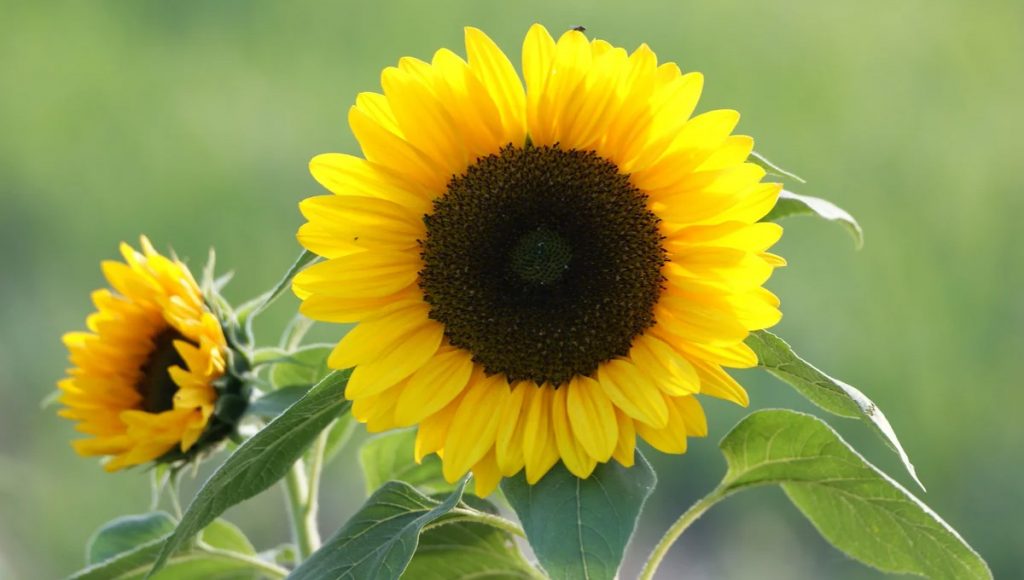There’s nothing subtle about sunflowers. There they stand, taller than the garden fence, with vibrant yellow heads screaming summer and ‘look at me’.
But as summer turns to autumn, their heavy heads dry and droop. Now’s a good time to collect their seeds.
That’s how my latest piece for ABC Science reads, a look at how and why sunflower seeds are arranged in spirals.

It mixes a bit of science history, maths, plant science and citizen science to tell a tale of research halted, then taken up again years later.
I won’t spoil it for you. To find out the name of the famous mathematician who worked on the maths of sunflower spirals after World War 2 and what happened in the decades that followed, read the full text here.
The article also talks about an innovative project to continue this mathematician’s work, a project that relied on gardeners counting seed spirals from their own sunflowers and submitting their data online – an example of citizen science.

Projects like this can collect more data than any one research group could collect itself. The more data collected, the greater likelihood you have of spotting trends or unusual patterns of sunflower seeds.
Sounds like a wonderful geeky project for a geeky gardener. Shame I didn’t get to hear about it until after the project had finished.
But the results are still online, as are instructions of how to learn more about your own sunflowers.

Now, for the real story
Now for the back story, the story behind the story, the bit you won’t read about in the ABC article.
If you looked at the project’s website, it’s easy to assume that the project is still collecting data. The website is live and my attempts to register to log data from my own garden seemed to be working. I couldn’t find anything to tell me that the project had already ended. Not a note, not a link. Nada.
I began to smell a rat when several emails to the organisers went unanswered and I didn’t get a response until I prodded people publicly via Facebook and Twitter. It didn’t help that the project was run by several organisations, with several potential points of contact, some of whom had appeared to have moved to other jobs and projects.

Eventually, Dr Marieke Navin, director of the Manchester Science Festival and one of the project organisers, responded. Here’s part of her reply:
Our project isn’t collecting data anymore, so it is not possible to submit data to our website. However, we do obviously encourage people to continue with the project if they would like to, but they would have to analyse the data themselves.
I don’t know exactly how people are expected to analyse the data themselves when it isn’t available online. Maybe she was referring to researchers who were welcome to the data by contacting her directly? Who knows?

Navin then went on to say that Professor Jonathan Swinton, the computational biologist behind the project, wasn’t working on it now. Just now? Will he resume work on the project in the future? If not, why not? These are questions I would have pursued if I was writing an investigative piece.
I’m also intrigued about the progress of the promised scientific paper based on the data collected. I’ve made a preliminary search and cannot find anything that has been published. I’ve also looked on the pre-print repository, arxiv, a place where mathematicians and physicists post papers that have yet to be published. The only piece by Swinton in this area is dated January 2012, before the project was officially launched.

Then there are the project’s preliminary results, which are available on its website and that I mention in the ABC piece. The project analysed data from 557 sunflowers from seven countries around the world, according to announcement made in October 2012.
I don’t know whether the people who submitted data online after the preliminary results were publicised know that they missed the boat and that their data won’t be analysed.

What’s the point?
All this makes me question what citizen science is for. Is it a short-term publicity drive to make headlines for a few weeks? Is it to engage people in science in a fun way for a short time, hoping that something will stick? Or does citizen science really collect useful data?
I guess it depends on the project. In this case, how would you feel if you submitted your data online and nothing was done with it?
Disappointed, cheated? Not bothered?
I’d love your thoughts.

